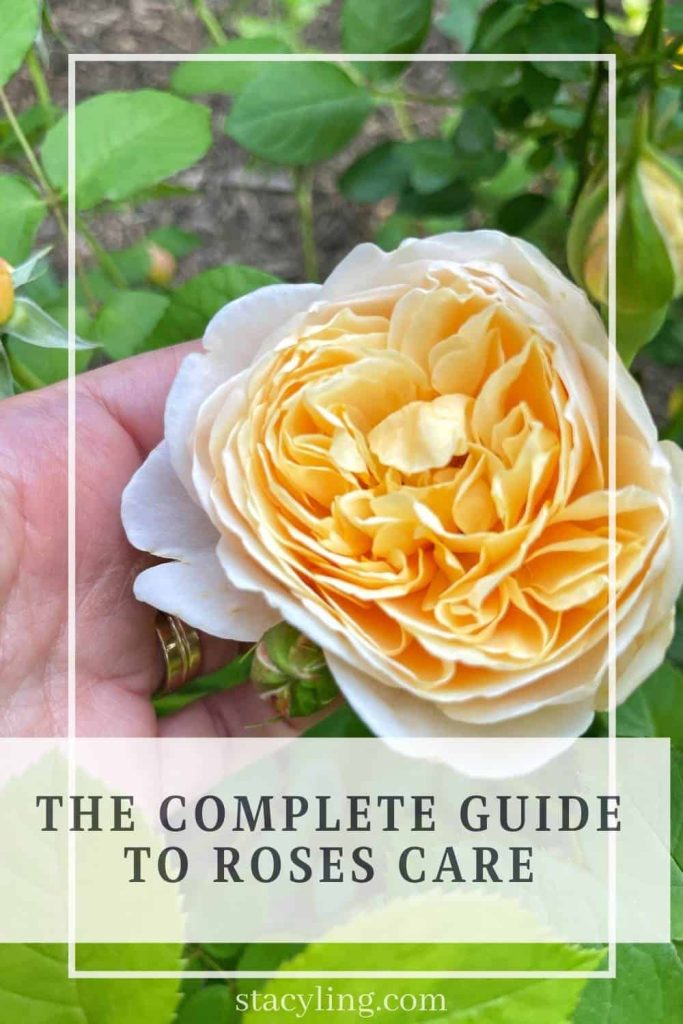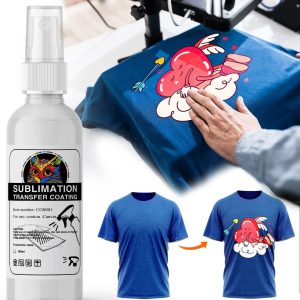
Spray roses have revolutionized the world of floriculture with their unique charm and versatility. Unlike traditional single-stem roses, these magnificent flowers produce multiple blooms on each stem, creating stunning clusters that have captured the hearts of gardeners, florists, and flower enthusiasts worldwide. With their compact size, abundant blooms, and incredible variety of colors, spray roses offer an exceptional combination of beauty and practicality that makes them perfect for both garden landscapes and floral arrangements.
The popularity of spray roses has skyrocketed in recent years, with the global cut flower market showing a consistent demand for these versatile blooms. According to industry reports, spray roses now account for approximately 15-20% of all rose sales in commercial floriculture, demonstrating their significant impact on the flower industry. Their ability to provide multiple blooms per stem makes them incredibly cost-effective for both growers and consumers, while their extended vase life of 7-12 days surpasses many other flower varieties.
What Are Spray Roses and How Do They Differ from Regular Roses?
Spray roses, also known as cluster roses or multi-flora roses, are a distinct category of roses characterized by their unique growth pattern that produces multiple smaller blooms on branching stems rather than single large flowers. These remarkable flowers typically feature 3-15 individual blooms per stem, with each flower measuring approximately 1-3 inches in diameter. The branching structure creates a natural bouquet effect, making each stem appear like a miniature floral arrangement.
The fundamental difference between spray roses and traditional hybrid tea roses lies in their blooming pattern and stem structure. While standard roses produce one large bloom per stem, spray roses develop lateral shoots that terminate in smaller flower clusters. This growth habit is the result of selective breeding programs that have enhanced the natural tendency of certain rose varieties to produce multiple blooms. The stems of spray roses are generally shorter than traditional roses, typically ranging from 12-24 inches in length, making them ideal for compact arrangements and garden borders.
Spray roses belong to several botanical classifications, including floribunda roses, polyantha roses, and miniature roses that have been specifically bred for the multi-bloom characteristic. The genetic diversity within spray rose varieties is remarkable, with breeders continuously developing new cultivars that offer improved disease resistance, longer vase life, and unique color combinations. Modern spray rose varieties often incorporate genes from various rose species, including Rosa multiflora, Rosa wichuraiana, and Rosa polyantha, which contribute to their clustering habit and hardy nature.
Popular Spray Rose Varieties and Their Unique Characteristics
The world of spray rose varieties is incredibly diverse, with hundreds of cultivars available to suit every taste and application. Among the most beloved varieties is ‘Lovely Lydia’, a stunning pink spray rose that produces 5-7 blooms per stem with exceptional fragrance and disease resistance. This variety has become a staple in commercial production due to its reliable performance and consistent bloom quality, with individual flowers measuring 2-2.5 inches across and featuring perfectly formed petals with a classic rose fragrance.
‘White Majolika’ represents excellence in white spray roses, producing pristine white blooms with subtle cream centers that create an elegant contrast. This variety typically yields 7-10 flowers per stem and is particularly prized for wedding arrangements and formal events. The blooms maintain their pure white color throughout their vase life, making them ideal for situations where color consistency is crucial. Professional florists often choose ‘White Majolika’ for its reliability and the way it complements other flowers in mixed arrangements.
Among the red spray rose varieties, ‘Red Majolika’ stands out for its deep crimson color and exceptional longevity. Each stem produces 6-9 rich red blooms that maintain their vibrant color for up to two weeks when properly cared for. The variety is known for its strong stems that support the flower clusters without drooping, making it excellent for both cut flower production and garden display. The deep red color develops even more intensity as the flowers mature, creating a dramatic visual impact.
‘Sun City’ brings warmth to the spray rose family with its brilliant yellow blooms that seem to capture sunshine in each petal. This variety produces 8-12 smaller blooms per stem, creating a full, rounded cluster effect. The yellow color is particularly stable, resisting fading even under intense sunlight, which makes it perfect for outdoor events and summer arrangements. Professional growers appreciate ‘Sun City’ for its high productivity and consistent performance across different growing conditions.
Orange spray roses like ‘Orange Majolika’ offer vibrant coral-orange hues that add energy and warmth to any setting. These varieties typically produce 6-8 blooms per stem, with each flower displaying gradual color transitions from deep orange centers to lighter peach edges. The unique coloration makes orange spray roses particularly popular for autumn arrangements and tropical-themed designs.
Specialty Spray Rose Varieties for Unique Applications
Garden spray roses have been specifically developed for landscape use, combining the multi-bloom characteristic with enhanced disease resistance and cold hardiness. Varieties like ‘Knockout Spray’ and ‘Drift Series’ roses offer continuous blooming throughout the growing season while requiring minimal maintenance. These roses typically produce smaller clusters of 3-5 blooms but compensate with frequent flowering cycles that provide color from spring through fall.
Miniature spray roses cater to those seeking even smaller blooms for delicate arrangements or container gardening. Varieties such as ‘Sweet Chariot’ and ‘Rainbow’s End’ produce tiny flowers measuring less than 1 inch across in clusters of 10-15 blooms per stem. These varieties are perfect for fairy gardens, small floral arrangements, and situations where proportion is important.
How to Grow Spray Roses Successfully in Your Garden
Growing spray roses successfully requires understanding their specific needs and providing optimal growing conditions that promote healthy cluster development. The foundation of successful spray rose cultivation begins with proper site selection, as these roses require at least 6-8 hours of direct sunlight daily to develop full, robust flower clusters. Morning sunlight is particularly important as it helps dry dew from the leaves, reducing the risk of fungal diseases that can severely impact spray rose health.
Soil preparation is crucial for spray rose growing success, with well-draining soil that maintains consistent moisture being ideal. The optimal soil pH for spray roses ranges from 6.0 to 7.0, slightly acidic to neutral, which allows for optimal nutrient uptake. Before planting, incorporate 2-3 inches of well-aged compost or rotted manure into the planting area to improve soil structure and provide essential nutrients. The soil should drain well enough that water doesn’t pool after rainfall, yet retain sufficient moisture to prevent stress during dry periods.
When planting spray roses, proper spacing is essential for air circulation and disease prevention. Space plants 18-24 inches apart for most varieties, allowing adequate room for the natural spread of the plant while maintaining good air flow. Dig planting holes that are twice as wide as the root ball but no deeper, ensuring the graft union (the swollen area where the rose is grafted onto rootstock) sits at soil level in warmer climates or 1-2 inches below soil level in areas with harsh winters.
Spray Rose Care Throughout the Growing Season
Effective spray rose care involves consistent attention to watering, fertilizing, and pruning practices that support healthy cluster development. Water spray roses deeply but infrequently, providing approximately 1-1.5 inches of water per week through drip irrigation or soaker hoses that deliver moisture directly to the root zone without wetting the foliage. Avoid overhead watering, especially in the evening, as wet foliage overnight creates ideal conditions for fungal diseases.
Fertilizing spray roses requires a balanced approach that supports both foliage growth and flower production. Apply a balanced granular fertilizer (such as 10-10-10) in early spring as new growth begins, followed by monthly applications of rose-specific fertilizer throughout the growing season. Supplement with Epsom salt (magnesium sulfate) applications every 6-8 weeks to promote healthy foliage and improved flower color intensity. Organic options include compost tea applications every 2-3 weeks and fish emulsion fertilizer monthly during active growth periods.
Pruning spray roses differs from traditional rose pruning techniques due to their cluster-blooming habit. Remove spent flower clusters by cutting back to the first five-leaflet leaf below the cluster, which encourages rapid re-blooming. During dormant season pruning, focus on removing dead, diseased, or crossing branches while maintaining the plant’s natural shape. Spray roses generally require less aggressive pruning than hybrid teas, with the goal being to maintain good air circulation and encourage new flowering shoots.
Spray Rose Diseases and Pest Management Strategies
Spray rose diseases can significantly impact both the health and appearance of these beautiful flowers, making prevention and early intervention crucial for successful cultivation. The most common diseases affecting spray roses include black spot, powdery mildew, downy mildew, and rust, each requiring specific management approaches for effective control.
Black spot appears as dark, circular spots on leaves that gradually enlarge and cause yellowing and leaf drop. This fungal disease thrives in warm, humid conditions and can severely weaken spray rose plants if left untreated. Prevention involves ensuring adequate air circulation around plants, avoiding overhead watering, and removing fallen leaves that can harbor fungal spores. Treatment options include fungicidal sprays containing myclobutanil or propiconazole, applied according to label directions at first sign of infection.
Powdery mildew manifests as a white, powdery coating on leaves, stems, and flower buds, particularly during periods of high humidity with moderate temperatures. This disease can distort new growth and reduce flower quality in spray roses. Cultural controls include proper plant spacing, morning watering to allow foliage to dry quickly, and selecting resistant varieties. Organic treatments include baking soda sprays (1 tablespoon per gallon of water) or horticultural oil applications.
Pest management for spray roses focuses on common insects including aphids, thrips, spider mites, and rose chafers. Aphids cluster on new growth and flower buds, sucking plant juices and potentially transmitting viral diseases. Control methods include encouraging beneficial insects like ladybugs and lacewings, using insecticidal soap sprays, or applying systemic insecticides for severe infestations.
Thrips cause silver streaking on petals and leaves, particularly damaging to the appearance of cut spray roses. Blue sticky traps can help monitor and reduce thrip populations, while beneficial mites and predatory insects provide biological control. Spider mites become problematic during hot, dry conditions, causing stippling and eventual browning of leaves. Maintaining adequate soil moisture and increasing humidity around plants helps prevent mite problems, while miticide applications may be necessary for severe infestations.
Integrated Disease and Pest Management for Spray Roses
Successful spray rose disease prevention relies on integrated management approaches that combine cultural practices, resistant varieties, and targeted treatments. Weekly inspection of plants allows for early detection of problems when they’re most easily managed. Maintain garden hygiene by removing fallen leaves, spent flowers, and pruning debris that can harbor disease organisms and pest eggs.
Resistant spray rose varieties offer excellent options for reducing disease pressure while maintaining flower quality. Varieties like ‘Knockout Spray’ and many of the Majolika series demonstrate improved resistance to common fungal diseases while producing abundant, high-quality flower clusters. When selecting varieties, consider local disease pressures and choose cultivars with documented resistance to prevalent problems in your area.
Using Spray Roses in Floral Design and Arrangements
Spray roses in floral design offer unparalleled versatility and value, making them indispensable tools for professional florists and home arrangers alike. Their natural clustering habit provides instant fullness and texture that would require multiple single-stem flowers to achieve, making them cost-effective choices for both large-scale events and intimate arrangements. The varied bloom sizes within each cluster create natural depth and movement, eliminating the need for additional filler flowers in many designs.
Wedding applications for spray roses have expanded dramatically as brides and wedding planners recognize their romantic appeal and practical benefits. Bridal bouquets featuring spray roses offer a lush, garden-picked appearance that complements both rustic and elegant wedding themes. The smaller individual blooms create intimate detail when viewed up close, while the overall cluster effect provides visual impact from a distance. Popular wedding combinations include white and blush spray roses mixed with garden roses, or monochromatic arrangements using varying shades of pink spray roses.
Centerpiece designs with spray roses benefit from the flowers’ compact nature and full appearance. A single variety of spray roses can create stunning monochromatic centerpieces, while mixing different colored spray roses produces vibrant, cheerful arrangements perfect for celebrations and gatherings. The sturdy stems support the flower clusters well, making spray roses reliable choices for arrangements that need to maintain their appearance throughout long events.
Commercial Applications of Spray Roses
Retail flower arrangements increasingly feature spray roses due to their longevity and customer appeal. Grocery store floral departments report that spray rose bouquets consistently outsell many other flower varieties due to their perceived value and extended vase life. The ability to create full-looking bouquets with fewer stems makes spray roses profitable for retailers while providing customers with arrangements that look abundant and last longer than many alternatives.
Event planning with spray roses offers significant advantages for decorators working with budget constraints or timeline pressures. Large-scale events can achieve dramatic impact using spray roses as the primary flower, supplemented with greenery and accent flowers. The uniformity of commercial spray rose production ensures consistent color and quality across large orders, crucial for maintaining design cohesion in extensive installations.
Sympathy and funeral arrangements benefit from the gentle, comforting appearance of spray roses, particularly in soft colors like white, pink, and yellow. The cluster formation creates a sense of abundance and continuation that many find comforting during difficult times. Spray roses work particularly well in casket sprays and standing arrangements where their sturdy stems and long-lasting blooms provide lasting beauty.
Spray Rose Care After Cutting: Maximizing Vase Life
Proper handling of cut spray roses begins at the moment of harvest and continues through their entire vase life. Commercial growers typically harvest spray roses when the first few buds in each cluster begin to show color, allowing the remaining buds to open gradually in the vase. This harvesting timing ensures maximum vase life while providing the opportunity to enjoy the full development of each flower cluster.
Processing cut spray roses requires immediate attention to prevent bacterial buildup and ensure optimal water uptake. Cut stems under running water at a 45-degree angle using sharp, clean shears or knives. Remove any foliage that would fall below the waterline in arrangements, as submerged leaves promote bacterial growth that shortens vase life. Commercial flower preservatives containing sugar, antibacterial agents, and pH adjusters significantly extend the life of spray roses, with properly treated flowers lasting 10-14 days compared to 5-7 days without treatment.
Conditioning spray roses involves placing freshly cut stems in deep, cool water immediately after processing. Allow flowers to hydrate for several hours before arranging, ensuring the stem ends remain submerged throughout the conditioning period. Professional florists often use specialized conditioning solutions that include flower food and hydrating agents to maximize water uptake and flower quality.
Daily Maintenance for Cut Spray Roses
Extending spray rose vase life requires consistent daily maintenance that prevents bacterial buildup and ensures continued water uptake. Change water every 2-3 days, recut stems under running water each time, and clean vases thoroughly with bleach solution between uses. Remove any wilted or damaged flowers from clusters to prevent ethylene production that can accelerate aging of remaining blooms.
Temperature management plays a crucial role in spray rose longevity, with cooler conditions significantly extending vase life. Keep arrangements away from direct sunlight, heating vents, and drafts that can cause rapid dehydration. Ideal display temperatures range from 65-72°F during the day, with slightly cooler nighttime temperatures if possible.
Troubleshooting common problems with cut spray roses includes addressing bent necks, which typically result from inadequate water uptake due to bacterial blockage in stems. Recut stems higher up, place in warm water with flower food, and ensure vase cleanliness to restore proper hydration. Premature petal drop often indicates ethylene exposure from aging fruit, vehicle exhaust, or other sources of this aging hormone.
Seasonal Care Guide for Spray Roses
Spring spray rose care focuses on supporting vigorous new growth and preparing plants for the blooming season ahead. As soil temperatures warm and new shoots emerge, gradually remove winter protection materials and begin regular fertilization programs. Apply pre-emergent herbicides if needed to prevent weed competition, and install or repair irrigation systems before active growth demands increase water requirements.
Pruning in spring sets the stage for healthy spray rose development throughout the growing season. Remove winter-killed wood, weak or spindly growth, and any branches that cross or rub against others. Shape plants to maintain good air circulation while preserving the natural growth habit that produces the best flower clusters. Different spray rose types require varying degrees of pruning, with garden varieties needing less aggressive cutting than greenhouse-grown types.
Summer spray rose maintenance emphasizes consistent watering, pest monitoring, and deadheading to encourage continuous blooming. Deep, infrequent watering promotes strong root development while preventing the stress that can reduce flower quality and quantity. Monitor plants weekly for early signs of pest or disease problems when intervention is most effective and least expensive.
Heat stress management becomes crucial during extreme summer temperatures, as spray roses can suffer reduced flower quality and increased susceptibility to diseases during prolonged hot periods. Provide shade during the hottest part of the day if possible, maintain consistent soil moisture, and avoid fertilizing during heat waves when plants cannot effectively utilize nutrients.
Fall and Winter Spray Rose Preparation
Autumn spray rose care prepares plants for winter dormancy while extending the blooming season as long as possible. Continue regular watering until soil begins to freeze, but reduce fertilization to allow plants to gradually slow growth and harden off for winter. Remove diseased plant material but avoid heavy pruning that can stimulate new growth vulnerable to frost damage.
Winter protection for spray roses varies significantly based on climate zone and variety hardiness. In zones 6 and colder, protect graft unions with mulch or soil mounds after the first hard frost. Container-grown spray roses require additional protection, either by moving containers to protected locations or insulating them with mulch and protective materials.
Planning for next season during winter months includes evaluating the current year’s performance, ordering new varieties, and preparing soil amendments for spring application. Review notes on disease and pest problems to plan prevention strategies, and consider adding resistant varieties or relocating plants that struggled with environmental conditions.
Growing Spray Roses in Containers and Small Spaces
Container growing of spray roses opens possibilities for gardeners with limited space or challenging soil conditions. The key to success lies in selecting appropriate varieties, providing adequate container size, and maintaining consistent care throughout the growing season. Compact spray rose varieties like the Drift series and many miniature types adapt well to container culture while providing abundant blooms.
Container selection for spray roses should prioritize drainage and adequate root space over decorative appeal. Choose containers at least 18-24 inches deep and equally wide for most spray rose varieties, ensuring multiple drainage holes prevent waterlogged conditions. Terra cotta and wood containers provide better root temperature regulation than plastic or metal, though they require more frequent watering due to increased evaporation.
Potting mix for spray roses must balance drainage, water retention, and nutrient availability. Commercial potting mixes designed for roses or flowering plants provide good starting points, but amendment with compost, perlite, and coarse sand improves performance. Avoid garden soil in containers, as it compacts and drains poorly, leading to root problems and reduced plant vigor.
Watering container spray roses requires more frequent attention than ground-planted specimens, as containers dry out more quickly and completely. Check soil moisture daily during hot weather, watering thoroughly when the top inch of soil feels dry. Apply water slowly to ensure complete penetration, and allow excess water to drain completely to prevent root rot.
Fertilizing and Maintaining Container Spray Roses
Container fertilization requires more frequent applications than ground planting since nutrients leach out more quickly with regular watering. Use slow-release fertilizer granules at planting time, supplemented with liquid fertilizer every 2-3 weeks during active growth. Monitor plants for signs of nutrient deficiency, particularly yellowing leaves or reduced flower production, which may indicate the need for additional feeding.
Repotting spray roses becomes necessary every 2-3 years as roots fill containers and potting mix breaks down. Early spring before active growth begins provides the best timing for repotting. Gently remove plants from containers, prune any circling or damaged roots, and replant in fresh potting mix in the same or slightly larger containers.
Overwintering container spray roses in cold climates requires protection from freezing temperatures that can damage both roots and canes. Move containers to protected locations like unheated garages or basements, or group containers together and surround with insulating materials. Reduce watering during dormancy but don’t allow soil to completely dry out.
Companion Planting with Spray Roses
Companion plants for spray roses can enhance both the beauty and health of garden displays while providing practical benefits like pest control and improved soil conditions. The key to successful companion planting lies in selecting plants with similar cultural requirements that complement rather than compete with spray roses for resources.
Perennial companions that work well with spray roses include lavender, catmint, salvia, and ornamental grasses. Lavender provides excellent contrast with its silver foliage and purple flowers while offering natural pest-repelling properties that benefit nearby roses. The similar water and sun requirements make lavender an ideal partner, while the extended blooming season provides color when roses are between flush cycles.
Catmint serves as an excellent groundcover companion, producing clouds of blue-purple flowers that complement most spray rose colors. Its spreading habit helps suppress weeds around rose plantings while requiring minimal maintenance once established. The strong fragrance may help deter some rose pests, though scientific evidence for this benefit remains limited.
Annual companions offer flexibility to change color schemes and adapt to different rose varieties each season. Marigolds have long been planted near roses for their supposed pest-repelling qualities, though their bright colors also provide cheerful contrast to pink and white spray roses. Sweet alyssum creates carpet-like groundcover that doesn’t compete with rose roots while providing continuous small white or purple flowers.
Herbs and Vegetables as Rose Companions
Herb companions like basil, oregano, and chives may provide pest control benefits while offering practical harvests from rose garden spaces. Basil planted near roses reportedly improves rose fragrance and flavor while deterring aphids and other soft-bodied insects. The heat-loving nature of basil makes it suitable for sunny rose gardens, though it requires more frequent watering than established roses.
Vegetable companions can create productive and beautiful combinations, particularly with compact spray rose varieties. Lettuce and other cool-season greens provide spring and fall interest in rose beds while utilizing space before roses reach full size. Garlic planted as bulbs in fall emerges early to provide foliage contrast and reportedly improves rose health, though harvest timing must be coordinated with rose care schedules.
Groundcover plants help maintain soil moisture and temperature while reducing maintenance requirements. Ajuga provides dense, low-growing coverage with attractive foliage and spring flowers in blue or purple. Sedum varieties offer succulent foliage texture and late-season flowers that extend garden interest beyond rose blooming periods.
Propagating Spray Roses: Growing Your Own Plants
Spray rose propagation allows gardeners to expand their collections and preserve favorite varieties while developing valuable gardening skills. Most spray roses grown commercially are grafted onto rootstock, but home gardeners can successfully propagate many varieties through cuttings, division, or budding techniques.
Taking spray rose cuttings works best during active growing season when stems are semi-hardwood, typically in late spring or early summer. Select healthy shoots about pencil thickness with several sets of leaves, cutting 6-8 inch pieces just below a leaf node. Remove lower leaves and flowers, retaining 2-3 sets of upper leaves to support photosynthesis during root development.
Rooting spray rose cuttings requires consistent moisture and warm temperatures while preventing fungal problems that can destroy developing roots. Dip cutting bases in rooting hormone containing IBA (indole-3-butyric acid) at concentrations of 1000-3000 ppm for softwood cuttings or 3000-8000 ppm for semi-hardwood material. Plant in well-draining rooting medium such as perlite, coarse sand, or commercial seed-starting mix.
Caring for rooting cuttings involves maintaining high humidity while providing bright, indirect light and consistent bottom heat around 70-75°F. Cover cutting containers with clear plastic or place in humidity chambers, monitoring daily for signs of fungal problems or excessive drying. Rooting typically occurs within 4-8 weeks, indicated by new growth emergence and resistance when cuttings are gently tugged.
Advanced Propagation Techniques
Budding spray roses onto rootstock provides the strongest, most vigorous plants identical to commercial production methods. This technique requires practice and proper timing, typically performed in late summer when bark slips easily from stems. Select healthy budwood from current season’s growth, harvesting early morning when stems contain maximum moisture.
Rootstock selection significantly impacts final plant performance, with choices including ‘Dr. Huey’, ‘Multiflora’, and ‘Fortuniana’ depending on climate and soil conditions. ‘Dr. Huey’ provides good cold hardiness and works well in most temperate climates, while ‘Fortuniana’ offers superior performance in warm, humid conditions but lacks cold tolerance.
Layering spray roses offers a simple propagation method that works well for garden varieties with flexible stems. Bend healthy, young shoots to ground level, wound the stem slightly where it contacts soil, and cover with 2-3 inches of soil while leaving the growing tip exposed. Roots typically develop within one growing season, after which the new plant can be separated from the parent.
Seasonal Spray Rose Arrangements and Design Ideas
Spring spray rose arrangements celebrate renewal and fresh beginnings with delicate color combinations and garden-fresh styling. Combine pale pink and white spray roses with tulips, daffodils, and flowering branches for arrangements that capture the essence of spring gardens. The emerging foliage of spray roses provides excellent textural contrast to bulb flowers, while their sturdy stems support mixed arrangements effectively.
Easter and spring holiday arrangements benefit from spray roses’ symbol of new life and rebirth. Pastel spray roses in soft pink, yellow, and peach tones create perfect foundations for holiday displays, particularly when combined with traditional spring elements like pussy willows, forsythia branches, and spring bulb flowers. The multiple blooms per stem provide fullness that makes smaller arrangements appear abundant and celebratory.
Mother’s Day arrangements featuring spray roses offer personal, intimate appeal that honors maternal love and nurturing. Pink spray roses combined with white varieties create classic, elegant displays that complement any home décor. The long vase life ensures arrangements remain beautiful throughout the extended Mother’s Day weekend, providing lasting reminders of appreciation and love.
Summer spray rose designs embrace bold colors and abundant textures that reflect the season’s energy and warmth. Orange and red spray roses combined with sunflowers, zinnias, and garden herbs create vibrant arrangements perfect for outdoor entertaining and casual gatherings. The heat tolerance of established spray rose varieties makes them reliable choices for summer events where flowers must withstand higher temperatures.
Fall and Winter Spray Rose Applications
Autumn arrangements with spray roses incorporate rich, warm colors that complement the season’s natural palette. Deep red and orange spray roses mixed with seasonal elements like chrysanthemums, wheat stalks, and colored leaves create arrangements that celebrate harvest abundance. The sturdy nature of spray roses provides structure for arrangements incorporating heavier seasonal elements like gourds and pine cones.
Thanksgiving centerpieces featuring spray roses in warm autumn tones create welcoming focal points for family gatherings. Combine burgundy and gold spray roses with seasonal fruits, candles, and natural elements for arrangements that enhance traditional holiday tables. The long-lasting nature of spray roses ensures centerpieces remain attractive throughout extended holiday celebrations.
Winter holiday arrangements showcase spray roses’ versatility in formal, elegant designs. White and deep red spray roses combined with evergreen branches, silver accents, and winter berries create sophisticated displays appropriate for both casual and formal holiday entertaining. The flowers’ ability to maintain their appearance in cooler temperatures makes them excellent choices for winter celebrations.
Valentine’s Day designs featuring spray roses offer romantic appeal with practical advantages over traditional single-stem roses. Pink and red spray roses create full, lush bouquets that provide exceptional value while conveying deep romantic sentiment. The multiple blooms per stem allow for creative arrangement styles that showcase the natural beauty of clustered flowers.
Indulge in the long-lasting beauty of our premium spray roses. Shop now!
Conclusion
Spray roses represent one of the most versatile and rewarding additions to any garden or floral design repertoire. Their unique ability to produce multiple blooms per stem, combined with exceptional longevity and diverse variety options, makes them invaluable for both novice and experienced gardeners. Whether you’re planning a stunning garden display, creating memorable floral arrangements, or building a sustainable cut flower operation, spray roses offer unmatched value and beauty that continues to captivate flower enthusiasts worldwide.
The future of spray rose cultivation looks bright, with ongoing breeding programs developing new varieties that offer improved disease resistance, extended vase life, and unique color combinations. As more gardeners discover the practical benefits and stunning beauty of these remarkable flowers, spray roses will undoubtedly continue growing in popularity and availability, ensuring their place as essential elements in gardens and floral designs for generations to come.





